When the foliage of a Peace Lily begins to droop, many assume that the plant is dying and without hope of revival. But sometimes the appearance of wilting is merely your plant communicating with you that there is a problem.
Your peace lily can be revived more often than not. Before you lose hope and toss out your plant, check out these symptoms and causes. Learn how to intervene to save your plant and return it to its former beauty.
- Related article: How to Care for Peace Lilies
5 Key Takeaways on the Peace Lily Dying
- Overwatering, low temperatures, poor soil conditions, and improper lighting are frequent culprits behind peace lily distress.
- Watering once a week is sufficient, but use distilled or rainwater to prevent mineral buildup from tap water.
- Peace lilies need well-draining soil, and fertilizing should be limited to the growing season with diluted, balanced fertilizer.
- Rootbound peace lilies require repotting into larger containers with fresh soil to promote healthy growth.
- Keep an eye out for common pests like mealybugs and root rot, treating promptly with insecticidal soap or fungicide.
Wilting Leaves or Flowers Don’t Always Mean Your Peace Lily Is Dying
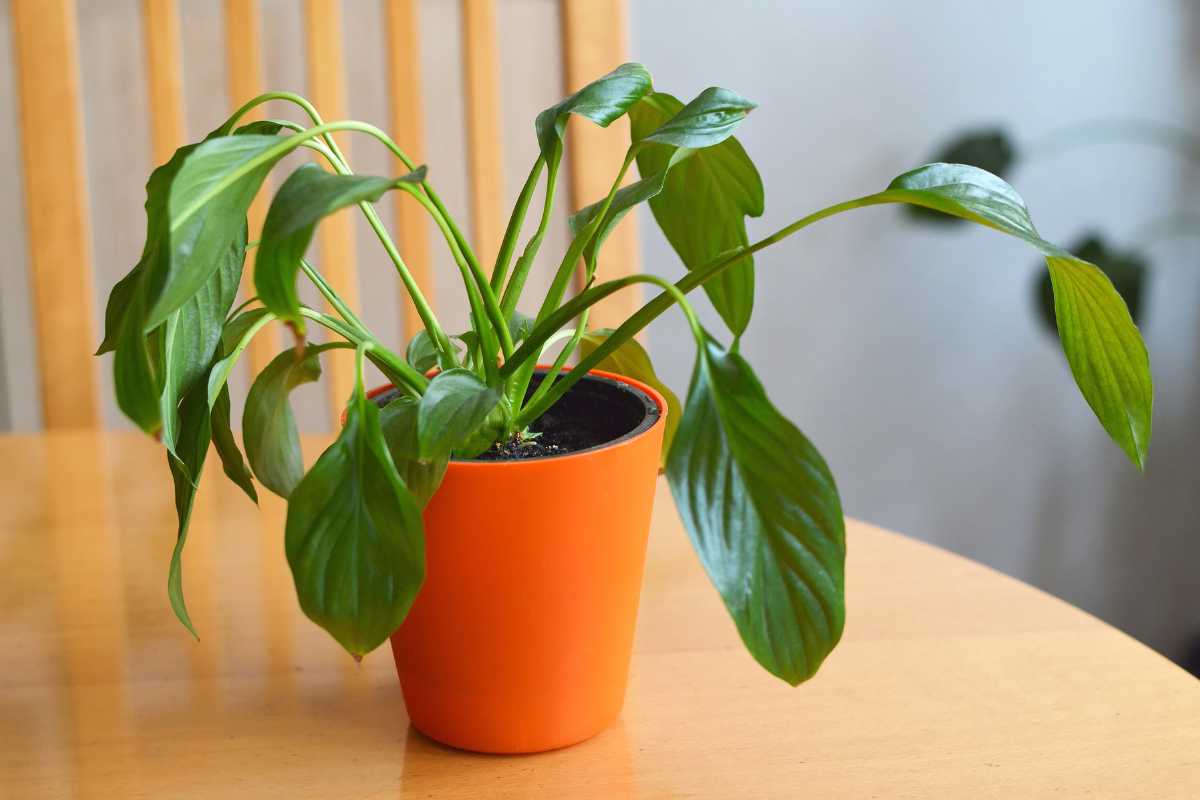
Peace lilies with wilted or dying leaves might give you the impression that it just lacks some water. But dying leaves don’t always mean the plant is thirsty. Sometimes, the problem is something else entirely.
For instance, soil-borne diseases can harm the roots and stems. Or maybe the soil isn’t holding moisture well or lacks nutrients. The plant is trying to talk to you, and you need to figure out what it’s saying to give it the right care.
Another thing to remember is that leaves or flowers might die because they’ve finished their natural life cycle. This doesn’t mean the plant is in trouble; it’s just part of life.
Let’s look at why a peace lily might be dying and how you can help it bounce back. I’ll share what I’ve found about the different reasons this can happen and what steps to take to revive the plant.
Different Reasons Why Your Peace Lily Is Dying and How to Fix Them
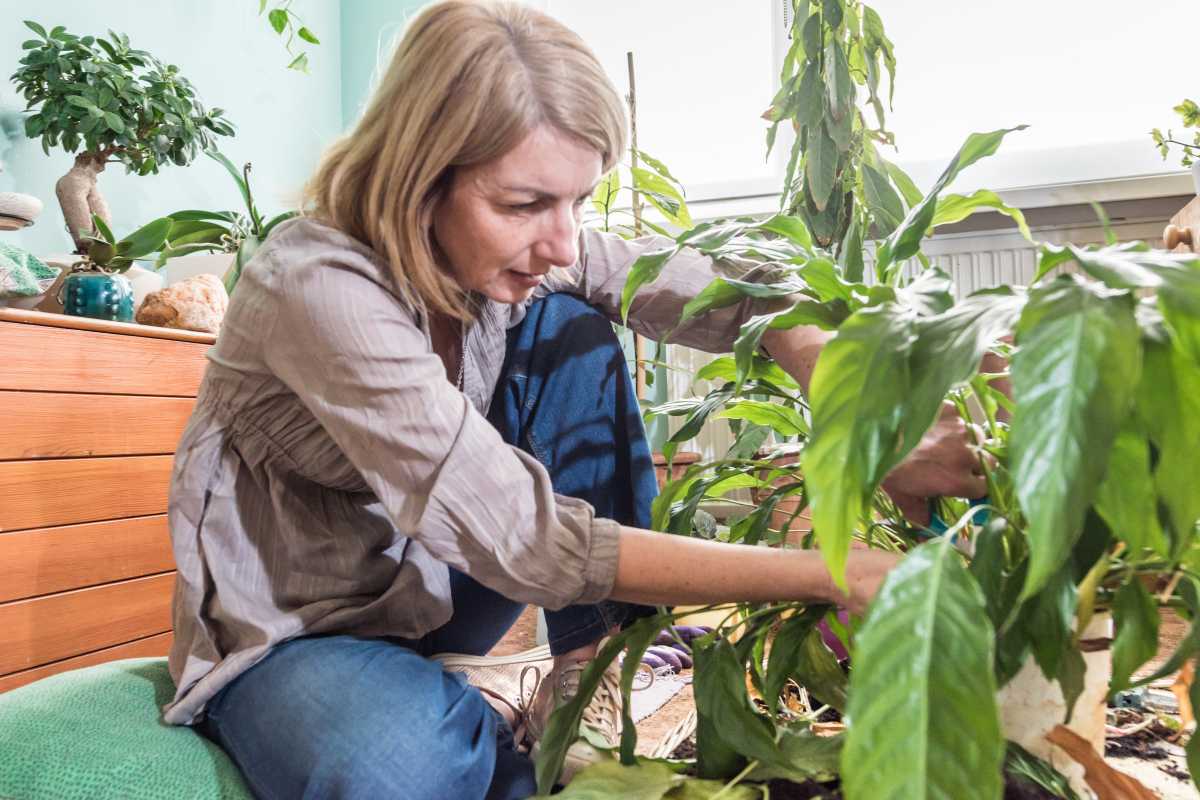
It’s important to remember that Peace Lilies are tropical plants that call the rainforest floors their home. In their natural habitat, the soil is well-draining, and temperatures are warm with high humidity. Light exposure is in the form of dappled sunlight under a canopy of trees.
Often, when a peace lily is dying, it is because the natural conditions of the plant are not adequately reproduced. This means that one or more environmental circumstances are in conflict with the plant’s needs for survival.
If the leaves or white flowers of your peace lily are wilting, turning black, brown, or yellow, review the following plant conditions to identify the cause and learn how to revive your peace lily before it’s too late.
1. Soil Toxicity
Overfeeding your peace lily is one of the principal causes of soil toxicity. Peace lilies do not require much fertilization as they are not heavy feeders.
Overfeeding will lead to a residue of salt build-up that poisons the soil and inhibits roots from obtaining essential nutrients. Your peace lily leaves may begin with brown leaf tips that then turn yellow and begin dying.
Flush out the soil 3 to 4 times under a tap and allow your plant to drain completely. If your tap water is mineral or chemical-heavy, flush with distilled water or collected rainwater.
If you do wish to fertilize your plant, limit feeding to the growing season using a 20-20-20 fertilizer that is water-soluble and diluted to half-strength.
2. Nutritient Deficiency
Though not a heavy feeder, these plants do require basic nutrition. Missing nutrients in the soil bed can contribute to the discoloration and wilting of foliage.
That may signal a lack of nitrogen. A lack of magnesium and iron will also give your plant an unhealthy appearance.
The use of quality organic potting soil should guarantee nutrition needs. To be extra cautious, you can use a water-based fertilizer monthly during the growing season that is diluted to half-strength. Overfertilizing can damage your peace lily and contribute to soil toxicity.
3. Rootbound Conditions
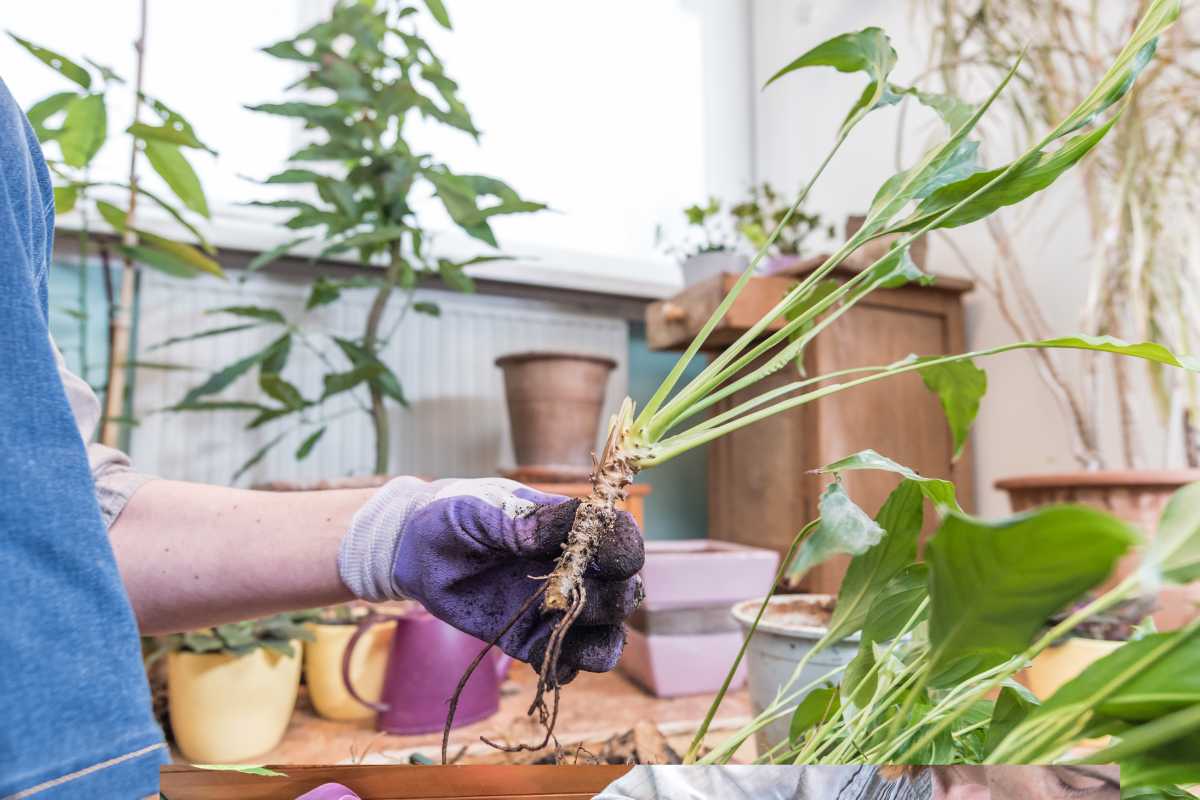
Your peace lily should be cultivated in a container that is twice the size of the plant’s rootball.
Roots that need space will gradually move through the soil bed and begin to circle the inside of the pot if the pot size is too small.
If there is no more space available, they may begin to emerge from drainage holes or the soil surface. This indicates that the root system has outgrown its current container.
The soil will probably be compacted or degraded to the point where the roots move out of the holes in search of water and nutrients. They will also have difficulty receiving adequate oxygen.
The roots can also appear on the soil’s surface. When they grow upward, they are again searching for water and nutrients. Exposed roots are in danger. In either case, your peace lily needs to be repotted as soon as possible.
4. Water Quality Issues
Peace lilies typically need watering just once a week. To properly hydrate them, soak the plant under a faucet or hose until excess water drains from the holes. This approach helps maintain consistent moisture for the roots.
Although hardy, peace lilies can be affected by water quality. Hard municipal water with high mineral content may cause drooping and discoloration. Additionally, tap water often contains chemicals like fluoride and chloride, which can harm nutrient absorption.
If your tap water is heavily chlorinated, let it sit overnight to allow chlorine to escape. Alternatively, use distilled or filtered water, or collect rainwater to improve water quality and keep your peace lily healthy.
5. Overwatering
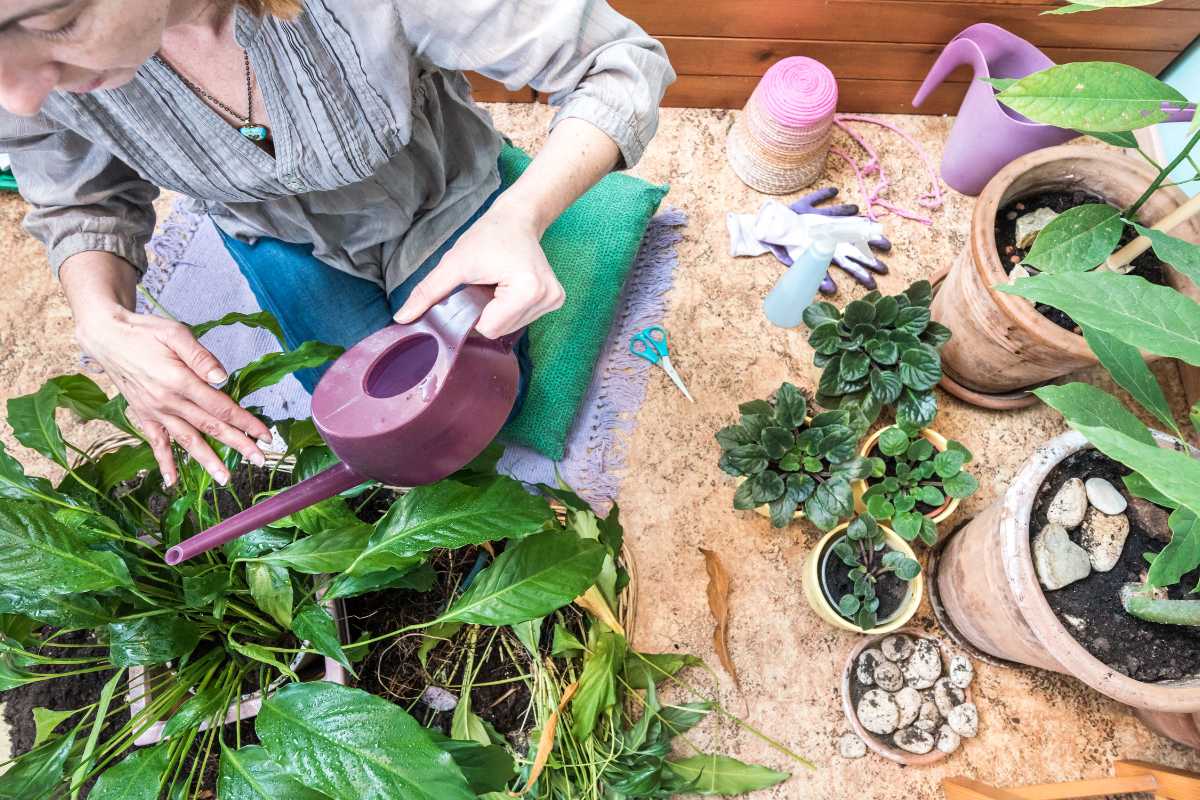
Overwatering is one of the most common reasons that peace lilies can die. Perhaps the plant has been given too much water, or the pot containing the plant has insufficient drainage.
If the plant has been overwatered, the root system will suffocate because roots sit in water and do not receive adequate air flow and oxygen. The plant is drowning and root rot will develop.
To revive the sick plant, you will need to repot it. Remove it from the wet soil. Prune away the damaged roots. The remaining healthy roots need to dry a bit. Then place the plant in fresh, dry soil.
Make sure the pot has enough drainage holes. Generally, a weekly watering will be sufficient, but if you see the soil is dry, go ahead and water.
You may need to water twice a week in warmer weather when plants absorb water quicker. The top half of the soil bed should be dry before watering.
6. Underwatering
It’s common to forget to water your peace lily occasionally, especially if you’ve been away. When thirsty, the plant will show droopy leaves. Watering it at this point can quickly revive it.
- Read more: Peace Lily Drooping Leaves
While occasional missed waterings won’t kill the plant, frequent neglect can harm its health. Repeated lack of water can lead to wilting and yellowing leaves, making it look like it’s dying.
To revive it, soak the plant and ensure water drains completely through the pot’s drainage holes before placing it back in its usual spot.
7. Low Temperatures or Drafts
The tropical peace lily is not cold-hardy and likes a temperature that measures between 65° and 85° Fahrenheit.
It will not survive the cold. If temperatures drop below 45°F, the plant will suffer damage because the lower temperatures play havoc with the plant’s metabolism, and the roots will not absorb water.
Move your peace lily to a warmer location. Your plant may be suffering cold shock. It will need a few days to recover and acclimate.
Also, place your plant far from cold drafts from windows, doors, hallways, air conditioning, and heating units and vents.
8. Improper Lighting
Peace lilies are popular houseplants because they adapt exceptionally well to low and medium-light conditions. As tropical plants, they naturally live on the rainforest floor, so they thrive in partial shade.
They prefer bright indirect light to aid in photosynthesis, which is necessary for a healthy plant.
When positioned in a dark location, leaves will discolor and wilt. Dim lighting will allow the plant to continue to be a lush shade of green, but it will not produce blooms.
Too much direct sunlight will discolor and wilt leaves, and scorch leaves. Position your plant in a place with bright indirect sunlight or with partial shade.
9. Propagation and Relocation Issues
Peace lilies are not finicky about relocation, but like any plant, will need some time to acclimate to new surroundings or a new position.
When new locations are a drastic change, your plant may exhibit signs of distress. Moving does not usually cause permanent damage to a plant if basic environmental conditions are met.
If your plant appears to be dying or doing poorly, be patient, allowing it some time to adapt to its new surroundings. Do not introduce other changes and watch for new growth, which will indicate that your plant is adjusting just fine.
10. Diseases
The most common of Spathiphyllum diseases is Cylindrocladium root rot which occurs during the warmer months of the year.
To revive a peace lily with root rot, you will need to remove the plant from its soil bed. Prune and remove any damaged roots. Spray the root ball with fungicide and then replant your peace lily in fresh soil.
If you plan on reusing the original container, you also need to sterilize your pot. Kill off any potential diseases that could continue to contaminate the plant.
Most diseases connected with a peace lily are fungal in nature, so this will be the best treatment for any fungal infection.
11. Pests
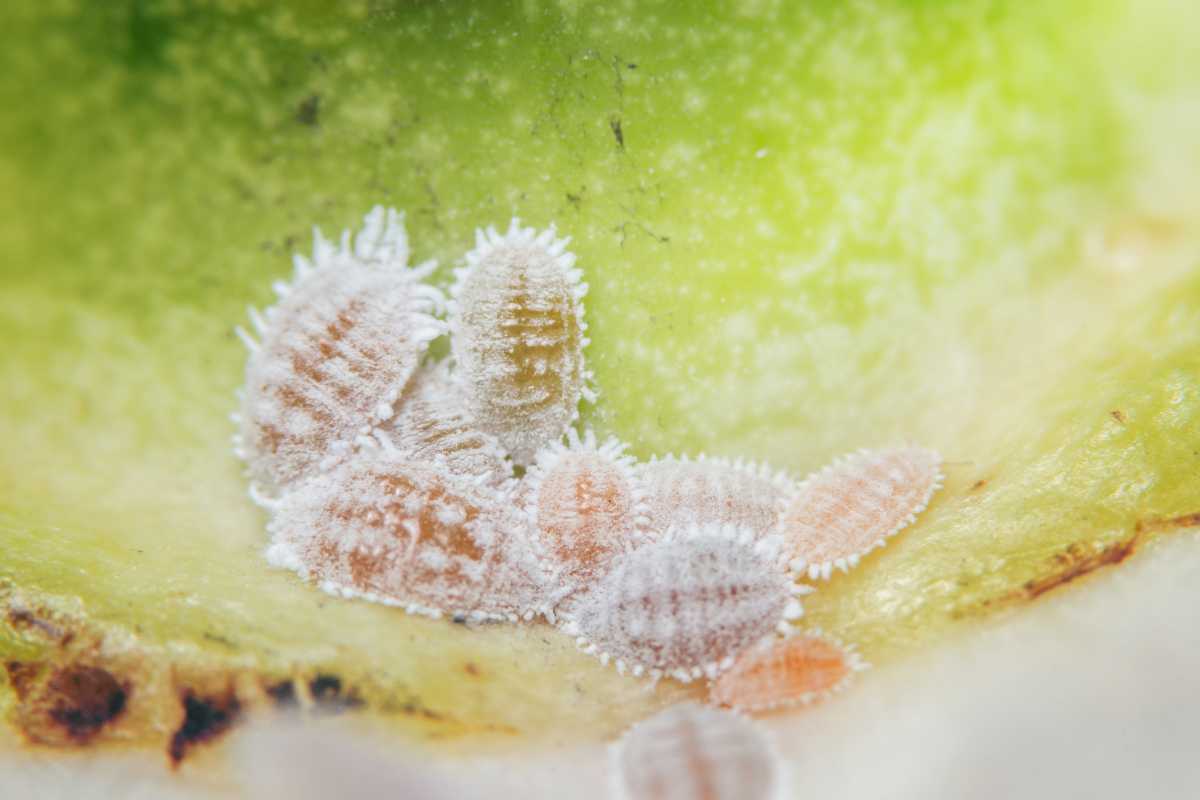
Mealybugs are the most common pests that invade peace lilies, appearing as white, cottony deposits on stems, leaves, or soil. These sapsuckers drain the plant’s moisture and nutrients, leading to discolored leaves and wilting.
You can remove mealybugs manually or with a cotton ball soaked in alcohol. A strong spray of water can also help dislodge them. After removal, treat the plant with organic insecticidal soap or neem oil.
Aphids may also infest peace lilies, which can be treated similarly. If your plant is too dry, it may attract spider mites, identifiable by webbing on the undersides of leaves.
Significant infestations result in wilting or discoloration. Keep the soil moist and treat with insecticidal soap or neem oil to combat these pests.
12. Other Stress Factors
Low humidity is stressful for a tropical rainforest plant. The peace lily loves high humidity. Low humidity can cause wilting and discoloration of foliage. Environmental humidity should measure 50% or above. This can cause your plant to appear as if it is dying.
A humidifier for houseplants is ideal but misting your plant several times weekly or grouping several plants to raise humidity will help. Another option is to create a pebble tray and place your plant on top of it.
Tips to Prevent a Peace Lily From Dying

Keep your peace lily healthy by following these general tips:
- Find your plant in a location that provides indirect bright sunlight. The plant will also adapt to low and medium-light environments. Flowers on peace lily plants will need plenty of light.
- Feed your peace lily once a month during the growing season with a liquid fertilizer diluted to half-strength. Do not fertilize outside of the growing season.
- Water weekly preferably by soaking your plant and draining it. You may increase it to twice a week during warmer weather.
- Keep your peace lily in a comfortably warm space with a humidity level above 50%.
- Examine your plant regularly for pest infestations or infections and treat your plant promptly.
- Remove discolored leaves from the plant by cutting at the base of the stem.
Peace Lily Care and Maintenance Tips
For your peace lily to thrive, a little extra care goes a long way. From keeping your pruning tools clean to placing your plant in the right spot, these maintenance tips will help prevent disease, encourage new growth, and keep your peace lily healthy.
Give your plant time to recover from stress, and with consistent care, it will flourish with vibrant leaves and blooms.
- Always sterilize your tools with rubbing alcohol to prevent disease and pest spread.
- When removing dead foliage or blooms, snip at the base of the plant.
- Do not apply fertilizer if your plant is ill.
- Make sure the location of your plant benefits from good air circulation but without drafts.
- Be patient.
Revive a Dying Peace Lily Final Thoughts
Reviving a stressed peace lily can be a rewarding process. By paying attention to its water, light, and soil needs, as well as addressing issues like root rot or pest infestations, you can help your plant thrive again.
Regular monitoring and a balanced care routine will ensure your peace lily stays healthy and continues to flourish in your home.
To learn more about the peace lily, check out these articles:




